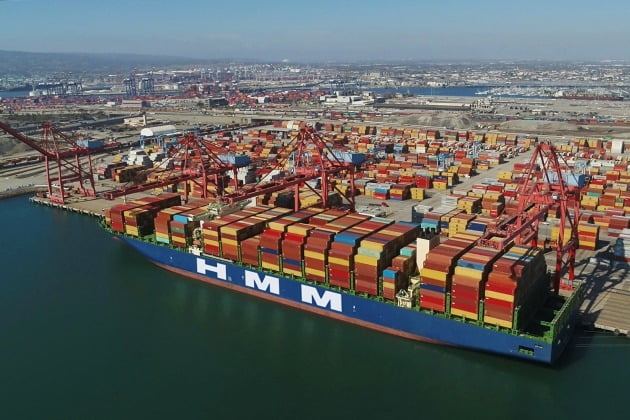
Photo = Hankyung DB
“The shipping industry is over.”
In February 2017, Hanjin Shipping, the oldest in the shipping industry, was disassembled in the air. The workers at the shipping company sighed deeply and helped themselves. In the midst of the bankruptcy of Hanjin Shipping, shipping companies large and small faced a liquidity crisis, and their self-help seemed to be realizing. The situation of the shipping company, which had endured the severe ordeal, sharply reversed last year.
The performance of HMM (formerly Hyundai Merchant Marine), which continued the’full line’ march, drew a steep upward curve. With the resurgence of the shipping company, the service balance in February turned to a surplus in a long time. It has been 6 years and 3 months since November 2014, when Hanjin Shipping suffered a liquidity crisis.
Crisis in the shipping industry, directly connected to a deficit in service balances
The Bank of Korea announced on the 7th that the current account surplus in February reached $8.30 billion (about 9.56 trillion won). The surplus has increased by 25.3% ($1.62 billion) from last February ($6.41 billion). As the background of the current account surplus has increased, the service account has turned to a surplus.
In February, the service balance turned to a surplus of 130 million dollars, the first time since November 2014 (a surplus of 90 million dollars). The transport account surplus, which constitutes the service account, was $810 million, which was largely affected by the turnaround compared to last February ($20 million deficit). Lee Seong-ho, head of the bank’s financial statistics department, explained, “As HMM increased its fleet (ships load), the transport balance turned to a surplus.” The service balance has been regarded as an item that eats up the current account due to its chronic deficit. One of the causes of the service balance deficit is the transportation account, which has been in the red for more than four years.
However, the transportation balance was the window for foreign currency earning, which continued to surplus immediately after 1997, when the financial crisis suffered. Hanjin Shipping, Hyundai Merchant Marine, STX Pan Ocean, and other companies that dominate the global shipping industry have continued their steady performance.
The structure of the deficit in the transport account has solidified since the liquidity crisis of Hanjin Shipping in 2016 began in earnest. Hanjin Shipping, who was suffering from anxiety, was disassembled in the air in 2017. Hyundai Merchant Marine, the second-largest shipping company in Korea, also continued to lose money by selling its net transportation division and terminals from 2013. The downturn in shipping companies, which has continued since 2016, has been directly linked to a deficit in the transportation and service balances.
HMM leads the transportation surplus
The shipping industry has shown signs of a full-fledged recovery since last year. HMM (formerly Hyundai Merchant Marine), which inherited the industry’s eldest position following Hanjin Shipping, posted an operating profit of 136.7 billion won in the second quarter of last year. After the first quarter of 2015, it turned to the black in 21 quarters. As the company continued its surplus march, it recorded 980.7 billion won in operating profit last year. Domestic shipping companies such as Pan Ocean (operating profit of 2252 billion won), Korea Shipping (145.9 billion won) and SM Merchant Marine (145.4 billion won) achieved operating profits of 140 to 200 billion won last year.
This is due to the increase in bulk cargo and containers carried by shipping companies as the restructuring of the shipping industry has progressed since 2015. HMM recorded full 32 voyages in a row until recently of 12 container ships of the world’s largest 24,000 TEU class (1TEU = one 20 ft long container), which began operation in April of last year. As the volume of goods soared here, transportation charges also jumped.
As the shipbuilder who was treated as an aemul complex survived, it continued a surplus march for eight consecutive months from July last year to February last year. During this period, the cumulative surplus of transport accounts reached $4.07 billion. It is explained that the shipping companies that have succeeded in resurrection are supporting the economic recovery trend.
As shipping companies are making large-scale facility investments and expectations that the increase in cargo volume will continue, the outlook for transportation and service balances is also bright. From last month, HMM plans to increase its fleet by receiving eight 16,000 TEU-class container ships in stages.
Reporter Kim Ik-hwan [email protected]
